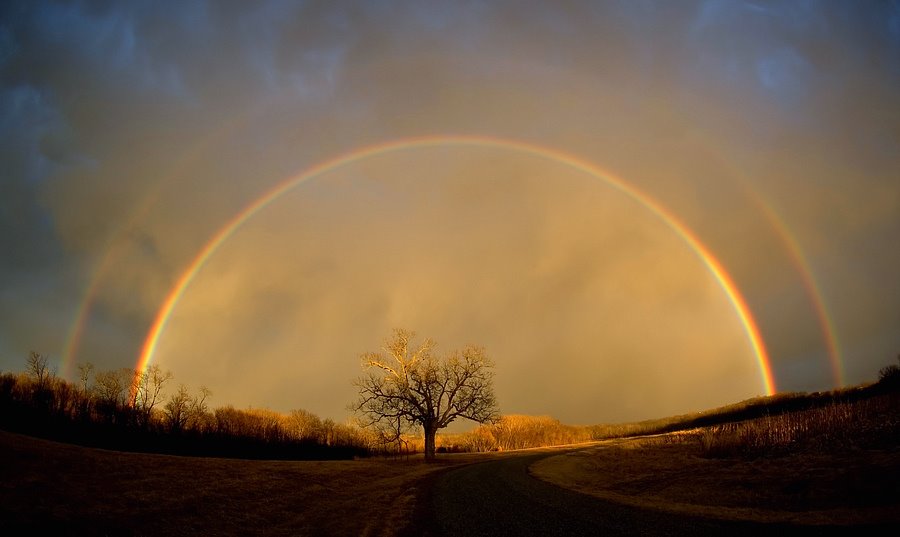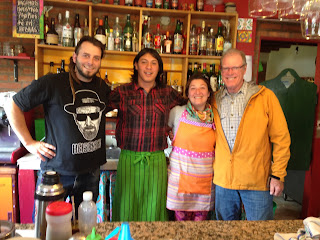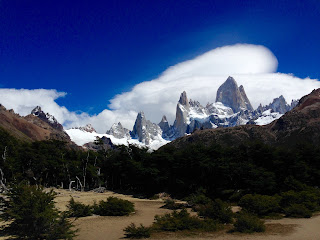Saturday, February 11, 2017
Thoughts on Patagonia
Thoughts on traveling in Patagonia, Argentina
The ubiquity of ‘el viento’---the wind characterizes Patagonia. Its harsh and rough hand has torn at crags and the up thrusts of granite faced mountains exerting dominion and carving its presence in geological time. That sculptor accompanied by the kindred spirits of rain and snow, hot and cold has left rugged peaks jutting into clear blue skies hung with cumulus clouds reflecting off glacial blue lakes that shimmer as the hand of 'el viento' plays across their surface.
The rivers snake over endless empty plains, llano that hosts ground cover weathered and ruggedly adapted to the wind and elements. Most plants cling low to the ground and the majority of them present spikes and thorns to the outside world. Even Patagonia's horses are wary of galloping off trail and encountering this natural resistance. Barren miles of dun colored earth stretch out unyielding in its expanse and enormity of distance, humbling the traveler.
The population centers like El Calafate are oases in between.Travelers flock there either for companionship, provisions or places to share their tales of conquest of the terrain in the vicinity. A hike to a refugio is a badge of honor earned by putting one foot doggedly in front of the other and pulling your weight uphill. Most popular hikes are to a lake at the base of a peak, an overlook-mirador that presents stunning views of unparalleled scenery, or on a circuit up and through mountain peaks that requires hiking long hours and camping in cold, rain or blowing dirt. Rarely is the earth still and not assaulting intrepid travelers.
The people are generally kind, laid back but industrious, well educated and proud. They are mostly of European extraction having decimated the indigenous population early on with European disease that they had no wherewithal to fight. Spanish, Italian, German, Irish immigrants have peopled this land making it somewhat like visiting a geographically immense Europe that speaks various dialects of Spanish. At its core the language is Castellano. Dialects vary by region. A strong middle class thrives here with lots of small businesses from kioscos---small candy shops, tiendas selling fruit, food, queso, vino, groceries, ice cream- both sheep and cow milk
lavanderias, restaurants, hotels and automobile repair shops. One of my favorite words for a business is ‘ferreteria.’ While Rob insists it is a place to purchase ferrets, the locals go there for hardware.
So some highlights of this place. While El Chalten the National Park in Southern Argentina, Patagonia was our first major mountain hiking experience and am impressive National Park, my favorite was the more expansive Torres del Paine National Park across the border and South into the Chilean Andes. We stayed near the southernmost Park entrance and luckily booked a car for 5 days to allow us the opportunity to explore this huge National Park with spectacular views. The character of these mountains reminds one of a much younger Rocky Mountain National Park. It is huge is scope and distance and demands either transport that you hire in Puerto Natales – the closest town which is 2 hours away, or the kindness of others if you are patient enough to thumb the journey to trail heads and boat embarkation. The glaciers are still alive and well there though melting rapidly as are all our glaciers and their run off feeds the crystalline waters of the rivers and lakes that course down mountain canyons and through watersheds to find its way to the glaciated river valleys below.
The abruptness of the upthrust of the mountains from valley to mountain top is awe inspiring much like that of the Rockies upon first viewing them from the flatness of the Plains.
These peaks are undaunted and defy weakness.
Subscribe to:
Post Comments (Atom)















No comments:
Post a Comment